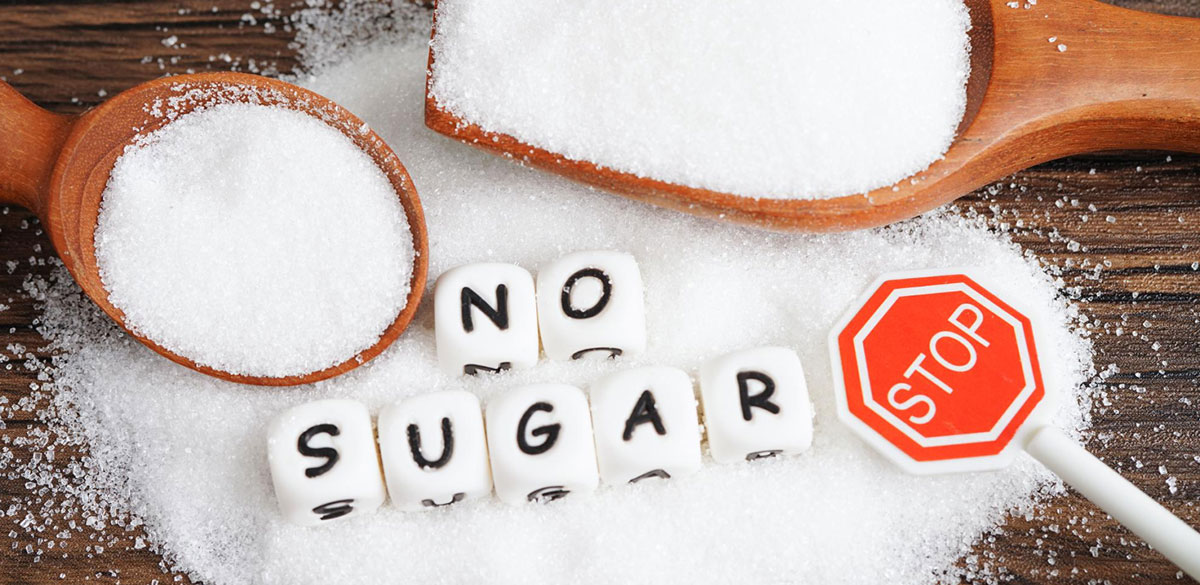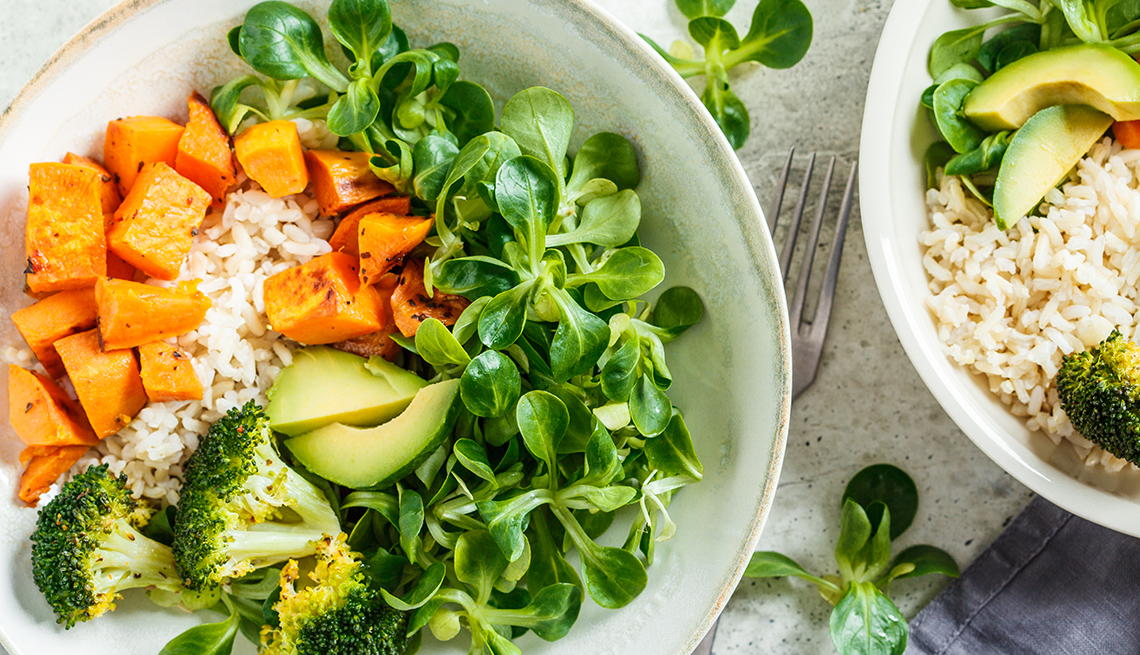Simple Ways to Reduce Sugar Intake
You really want to know how to stop eating sugar? then read on. Many drinks, sauces, and breakfast items have more sugar than you might think. A good first step to lowering your added sugar intake is to read product labels carefully. You can also cut back on added sugars by choosing whole foods and full-fat options instead of processed or low-fat products.
Eating too much sugar can be very harmful to your health. Added sugar, which is the sugar found in sodas, candies, and other processed foods, has been linked to serious health issues like obesity, type 2 diabetes, heart disease, cancer, and tooth decay.
Research indicates that most Americans consume between 55 to 92 grams of added sugar each day. This amount is equivalent to about 13 to 22 teaspoons of table sugar daily, making up around 12 to 16% of their total calorie intake.
This is much higher than the Dietary Guidelines for Americans, which recommend getting less than 10% of your daily calories from added sugars.
The World Health Organization even suggests keeping added sugar below 5% of your total calorie intake for the best health benefits.
Cutting added sugars from your diet can be tough, but it’s possible. This article will share 13 simple strategies to help you reduce your sugar consumption.
- Reduce Sugary Drinks
A large portion of added sugars in the American diet comes from sugary beverages, including sodas, sports drinks, energy drinks, sweetened teas, and more. Surprisingly, drinks that many people think are healthy, like smoothies and fruit juices, can also have high levels of added sugar.
For example, just one cup (about 271 grams) of cranberry juice cocktail can contain over 7 teaspoons of sugar, which is about 31 grams!
Your body processes calories from drinks differently than it does from food. When you consume sugary drinks, the calories are absorbed quickly, causing a fast spike in your blood sugar levels.
Additionally, these drinks do not make you feel as full as solid foods do. This means that if you drink a lot of sugary beverages, you may not eat less food to balance it out.
By cutting back on sugary drinks, you can support weight loss and enhance your overall health. Here are some healthier beverage options that are naturally low in sugar:
- Water
- Unsweetened sparkling water
- Herbal teas
- Black or green tea
- Coffee
Making these simple changes can help reduce your sugar intake while still keeping you hydrated and satisfied.
- Steer Clear of Sugary Desserts
Most desserts don’t offer much in terms of nutrition; they are often packed with sugar. This excess sugar can lead to spikes in your blood sugar levels, making you feel tired and hungry afterward and prompting cravings for more sugar.
Desserts made with grains and dairy—like cakes, pies, doughnuts, and ice cream—contribute to over 18% of the added sugar consumed in the American diet.
If you’re looking for something sweet that has less added sugar, consider these alternatives:
- Fresh fruit
- Greek yogurt topped with cinnamon or fruit
- Baked fruit with a drizzle of cream
- Dark chocolate (70% cocoa or higher)
By choosing whole fruits instead of sugary desserts, you not only cut down on sugar but also boost your intake of fiber, vitamins, minerals, and antioxidants.
- Avoid Sauces with Added Sugar
Many common sauces, such as ketchup, barbecue sauce, spaghetti sauce, and sweet chili sauce, can be surprisingly high in sugar, and many people aren’t aware of it.
For example, just one tablespoon (about 17 grams) of ketchup contains about 1 teaspoon (5 grams) of sugar, which means that ketchup is about 29% sugar—making it even sweeter than ice cream!
To reduce the hidden sugars in your diet, look for condiments and sauces labeled as “no added sugar.”
You can also enhance the flavor of your food with naturally low-sugar options such as:
- Herbs and spices
- Chili
- Mustard
- Vinegar
- Pesto
- Mayonnaise
- Lemon or lime juice
Using these alternatives can help you enjoy tasty meals without the extra sugar!
- Choose Full-Fat Foods
Low-fat versions of popular foods—like peanut butter, yogurt, and salad dressings—are widely available and often marketed as healthier options. If you’ve been told that fat is bad for you, it might seem natural to pick these low-fat alternatives, especially when trying to lose weight.
However, the surprising truth is that low-fat products often contain more sugar and sometimes more calories than their full-fat versions.
For example, a 6-ounce (170-gram) serving of low-fat vanilla yogurt can have around 24 grams of sugar and 144 calories. In contrast, the same amount of full-fat plain yogurt has only 8 grams of naturally occurring milk sugar and just 104 calories.
High sugar consumption has been linked to weight gain, which defeats the purpose of choosing low-fat options in the first place.
When working to reduce your sugar intake , it’s often better to opt for full-fat foods. Just be sure to check the ingredient list to make the healthiest choices. Full-fat foods can be more satisfying and may help you avoid the extra sugars that come with low-fat alternatives!
5. Focus on Whole Foods
Whole foods are those that have not been processed or refined and do not contain additives or artificial substances. Examples include fresh fruits, vegetables, legumes, whole grains, and meat on the bone.
In contrast, ultra-processed foods are pre-packaged items that often contain a mix of salt, sugar, fat, and additives designed to taste very appealing.
This makes it easy to overeat these kinds of foods. Examples of ultra-processed foods include soft drinks, sugary cereals, chips, and fast food.
Research shows that nearly 90% of the added sugars in the typical American diet come from ultra-processed foods, while only about 8.7% come from meals prepared at home using whole ingredients.
To reduce your sugar intake, try to cook from scratch whenever you can. You don’t need to prepare complicated meals; simple dishes like marinated meats or roasted vegetables can be both delicious and healthy.
By focusing on whole foods, you’ll not only cut down on added sugars but also enjoy a more nutritious diet overall!
- Check for Sugar in Canned Foods
Canned foods can be a convenient and affordable part of your diet, but they often contain a lot of added sugar. While fruits and vegetables naturally have sugars, these aren’t usually a problem since they don’t impact your blood sugar levels the same way added sugars do.
When choosing canned foods, avoid those that are packed in syrup or have sugar listed as an ingredient. Instead, look for options labeled “packed in water” or “no added sugar.” If you end up with canned fruits or vegetables that do have added sugar, rinsing them with water before consuming can help remove some of the excess sugar.
- Be Cautious with “Healthy” Processed Snack Foods
Many processed snacks come with a “health halo.” They may seem healthy at first glance, and marketing terms like “wholesome” or “natural” can make them appear better for you than they really are.
Surprisingly, snacks such as granola bars, protein bars, and dried fruit can contain as much sugar as candy bars or chocolate.
Dried fruit, for example, is rich in fiber, nutrients, and antioxidants, but it also has concentrated amounts of natural sugar. Some dried fruits are even “candied,” meaning they have added sugars, so it’s best to enjoy them in moderation.
For healthier low-sugar snack alternatives, consider options like:
- Nuts and seeds
- No-sugar-added jerky
- Hard-boiled eggs
- Fresh fruit
By being mindful of added sugars in canned and processed snacks, you can make better choices for your health!
SEE MORE HERE>>>> Benefits Of Cilantro Seeds
- Limit Sugary Breakfast Foods
Many breakfast cereals are packed with added sugars. In fact, some popular cereals contain more than half of their weight in sugar! For instance, one cereal analyzed in a report had over 12 teaspoons (50 grams) of sugar per serving, making it an astounding 88% sugar by weight.
Interestingly, granola, which is often marketed as a healthy choice, tends to have even more sugar than other types of cereals on average. Other common breakfast items, such as pancakes, waffles, muffins, and jams, are also typically loaded with added sugars.
Instead of indulging in sugary breakfasts, save them for special occasions and opt for these healthier, low-sugar alternatives:
- Oatmeal sweetened with fresh fruit
- Greek yogurt topped with fruit and nuts
- Egg scramble with cheese and veggies
- Avocado on whole grain toast
Choosing breakfast options that are low in sugar and high in protein and fiber will help you feel full until lunchtime, reducing the temptation to snack unnecessarily.
- Read Labels
Reducing your sugar intake can be tricky because sugar can be hidden in many unexpected foods, such as ketchup and granola. Thankfully, food manufacturers are now required to list added sugars on their product labels. You can find added sugars under the total carbohydrates section on foods that contain them.
Another way to identify sugar content is to check the ingredient list. Ingredients are listed in order from highest to lowest by weight, so if sugar appears near the top, it means the product contains a significant amount.
However, there are over 50 different names for added sugars, making it harder to spot. Some of the most common names include:
- High fructose corn syrup
- Cane sugar or cane juice
- Maltose
- Dextrose
- Invert sugar
- Rice syrup
- Molasses
- Caramel
- Consider Eating More Protein
A high sugar diet is often linked to increased hunger and weight gain. In contrast, a diet low in added sugars but high in protein and fiber can help reduce hunger and promote a feeling of fullness. Research has shown that increasing protein intake by 25% can reduce cravings by up to 60%.
To help curb sugar cravings, stock up on protein-rich whole foods such as:
- Meat
- Fish
- Eggs
- Full-fat dairy products
- Avocados
- Nuts
- Switch to Natural Zero-Calorie Sweeteners
While there are many artificial sweeteners, like sucralose and aspartame, that are free of sugar and calories, they may cause imbalances in gut bacteria, potentially leading to poor blood sugar control, increased cravings, and weight gain. For this reason, it might be best to avoid these artificial sweeteners.
Instead, consider using natural zero-calorie sweeteners like stevia, erythritol, monk fruit, and allulose.
These sweeteners are derived from natural sources, although they do undergo some processing before reaching store shelves. Research on these alternatives is still ongoing, but they show promise as healthier options.
- Limit Items with High Sugar Content in the House
If you have high-sugar foods in your home, you may be tempted to eat them more often. It can be tough to resist the urge to indulge when sugary snacks are just a short walk to the pantry or fridge away.
If you live with others who prefer sugary items, it may be challenging to keep those foods out of the house. In that case, it’s a good idea to have a plan for when cravings hit. Research shows that distractions, such as working on puzzles or engaging in hobbies, can effectively help reduce cravings.
If distractions don’t work, consider stocking up on healthy, low-sugar snacks to satisfy your cravings instead.
- Get Enough Sleep
Good sleep is crucial for overall health. Poor sleep quality has been linked to various issues, including depression, lack of focus, weakened immune function, and obesity.
Additionally, not getting enough sleep can influence your food choices, making you more likely to reach for options that are high in sugar, fat, salt, and calories.
For example, studies have found that people who stay up late and don’t get adequate sleep tend to consume more calories, fast food, and soda while eating fewer fruits and vegetables compared to those who sleep well.
Moreover, research indicates that higher intakes of added sugar may increase the risk of insomnia in postmenopausal women.
If you’re struggling with making healthier food choices and reducing sugar intake, improving your sleep quality might help you regain control.
The Bottom Line
Most Americans consume too much added sugar in their diets, which can lead to serious health issues, including obesity, type 2 diabetes, heart disease, and even cancer.
It’s essential to limit obvious sources of sugar, such as desserts and sodas. However, it’s equally important to be aware of hidden sugars found in everyday items like sauces, low-fat foods, and processed snacks.
To effectively manage your added sugar intake, focus on a diet that emphasizes whole foods instead of highly processed options. This approach can help you lead a healthier lifestyle and reduce the risks associated with high sugar consumption.
What are the pros and cons of a vegan diet?
How Do You Feel When Your Sugar Is Low?
Benefits of Cloves to The Vagina

A graduate of Computer Science and Information Management Technology. Diploma – Caregiving, Certificates – Dementia and Diabetes Awareness and Management. A researcher, blogger, songwriter, singer and acoustic guitarist. Born in an environment where natural talents such as healing are imparted at our natural birth. This natural talents of healing is the result of our genetic inheritance and the training from family environment.



















